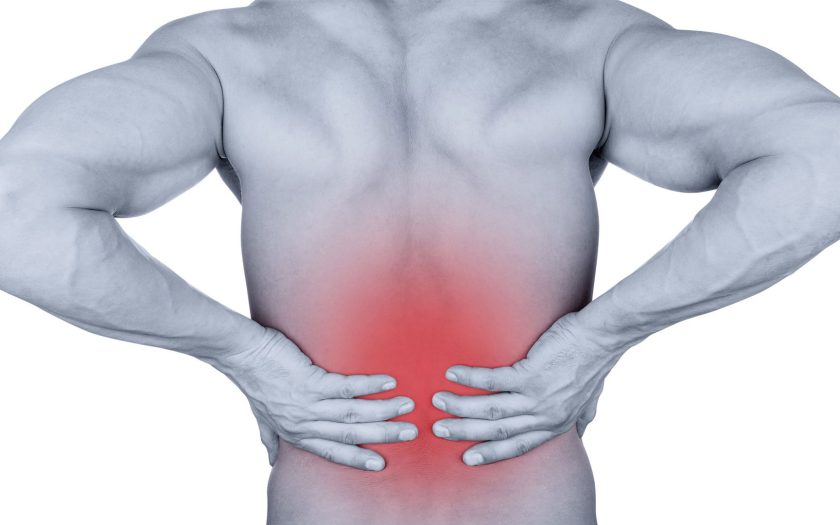Degenerative changes in intervertebral discs.
This process is driven by both natural aging and excessive stress on the spine. Discs act as crucial shock absorbers, providing flexibility and mobility to the spine. Over time or under excessive load, discs lose moisture, become less elastic and shrink. As a result, a person starts to experience discomfort in the lower back.
To maintain spinal health, it is recommended leading a healthy lifestyle and practice yoga. It is important to choose exercises that do not harm the spine. These exercises should be based on specific movements and holding poses for a certain amount of time. It is advisable to start these workouts with an instructor who can help select the appropriate asanas and monitor their execution. To perform each asana correctly and gain maximum benefits for both body and mind, it is also essential to use specialized yoga accessories (such as mats, blocks and massage balls).
Osteoarthritis
In this disease, pain usually arises after physical exertion as well as due to injuries, hormonal imbalances, poor posture, weak muscle support, excess weight, alcohol consumption and certain medications (both hormonal and those affecting calcium metabolism). As a result, the nourishment of the cartilage tissue and the production of synovial fluid are disrupted, leading to the accumulation of calcium salts, which causes the gradual deterioration of the joint. Hip osteoarthritis is characterized by reduced elasticity of the ligamentous apparatus and thinning of the cartilage, resulting in stiffness and pain in the hip joint, groin or buttocks.
Treatment for osteoarthritis includes the use of anti-inflammatory medications (for example Mobicam-DT), as well as topical ointments and gels. Sometimes, medicines based on chondroitin sulfate and glucosamine (for example Arthroblock forte) are also recommended, as they help to slow down the destruction of cartilage. Physical therapy, such as magnetotherapy and phonophoresis, can also improve health and speed up the recovery process.
Radiculitis
Radiculitis can present in acute and chronic forms, with periods of exacerbation and remission. Pain from this condition most often localizes in the waist, but it can also affect the cervical and thoracic regions. In cases of lumbosacral radiculitis, there is typically sharp pain in the lower back that occurs with any awkward movement. The main objectives of treating radiculitis are to relieve the acute pain typically associated with the condition and to address the underlying cause of the radiculitis. To relieve acute pain, are used medications, which can be administered orally, parenterally (intramuscularly or intravenously) and through therapeutic blockade.
Previously, radiculitis primarily developed in older people, but over the past few decades, this syndrome has increasingly been seen in younger individuals. The human body is evolutionarily adapted to high physical activity, but as lifestyles have changed, this activity has significantly decreased. Against this backdrop, pathological changes gradually begin to occur in the body, which provoke the development of diseases.

